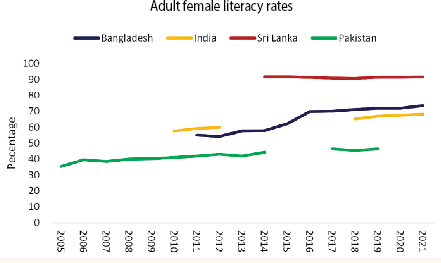Imagine that you are the governor of the State Bank of Pakistan (SBP). You have left a high-flying career at the World Bank to come back to the land of the pure. You have been given a chance to serve your homeland and you intend to make a difference. You have beefed up your team and taken several bold steps when Covid-19 hit Pakistan. The SBP interventions and low policy rate not only helped the industry, especially the small- and medium-enterprise sector but has also positioned the country for a 4 per cent GDP growth. You are passionate about innovation and financial inclusion. On the innovative side, your Roshan Digital accounts have been a resounding success and the party is just starting. On the Naya Pakistan low-cost housing, while the results are yet to be delivered, you are on the right course and confident that you will get there.
Despite these early successful interventions, there are miles to go before you sleep. You are well aware of Pakistan being a cash society. Rs6.2 trillion money circulation is an issue that you want to tackle. If you could bring this cash into the formal economy there would be multiple benefits, including documentation. The fact that banks act more as fund managers instead of banks also make you uneasy. However, you are aware that unless you create a disruption, the Ministry of Finance will continue to be dependent on borrowing from the banks due to the mismatch between tax revenues and expenditure.
Enroute to Islamabad on the 7am flight for another endless round of required briefings in the age of Zoom meetings, you devise a plan which should reduce the cash in circulation, reduce the government’s borrowing dependence from banks, document the economy and as an added benefit, lead the way for open banking in Pakistan.
A direct investment, through Pakistan’s digital currency, into a 7pc return on treasury bills will provide the best use case for the masses to use the wallet and hence potentially formalise the Rs6.2tr cash economy
As it is, of your four-part solution, the first intervention has already been launched. The SBP announced the launch of Raast early this year. Raast is SBP’s payments railroad which is expected to impact financial inclusion when you open up its membership beyond commercial banks and electronic money institutions. With its ability to pull transactions and user-friendly ability to transfer funds, merchant payments and settlement at the SBP you know you have a winner.
You then introduce your second intervention Central Bank Digital Currency (CBDC), not to be confused with cryptocurrencies like Bitcoin and Ethereum. This simply means that instead of holding a Rs100 note in your pocket, you hold the digital equivalent in a wallet provided by the SBP itself. So instead of you holding money in an Easypaisa or Jazz cash wallet, you hold funds in a wallet provided by the SBP and settled by the SBP and backed by the full faith of the government.
Now you have provided the railroad for the Rs6.2tr a potential home. The combination of CBDC and Raast is a very powerful solution. You are well aware that this may shrink the deposit base of the industry, however, given that the banks are busy lending to the government as opposed to lending to the private sector you are not going to have sleepless nights about this. Many countries central banks have already launched CBDC, including China, and Pakistan has a strong use case.
Now that you have built the country’s most efficient payment rails and wallet, you need a construct use cases to encourage the cash in circulation to populate your digital wallet. You play your trump card. A Rs5,000 denominated treasury bill investment product. Any individual (after your know-your-customer/anti-money laundering screening for opening the CBDC wallet) can now invest directly in treasury bills. At a 7pc return, you have provided the best use case for masses to use your wallet. To further enhance your use case, you integrate with all existing merchant acceptance schemes (both physical points of sale and QR codes) and virtual for e-commerce transactions.
People slowly start to avail this innovative solution.
Your last card is that when you have enough transaction data in the CBDC wallet, with the customer consent and under a regulatory framework you allow the customer to share their data with fintech so that the customer can benefit from their own data.
Your master solution which can be implemented within 12 months will kill many birds with one stone. You start to document the economy and reduce the cash in circulation. You improve the savings rate by providing a high yielding savings option. By borrowing directly from the public, you reduce the government’s dependence on the banks and encourage them to lend.
The writer is a tech entrepreneur
Published in Dawn, The Business and Finance Weekly, June 21st, 2021


































